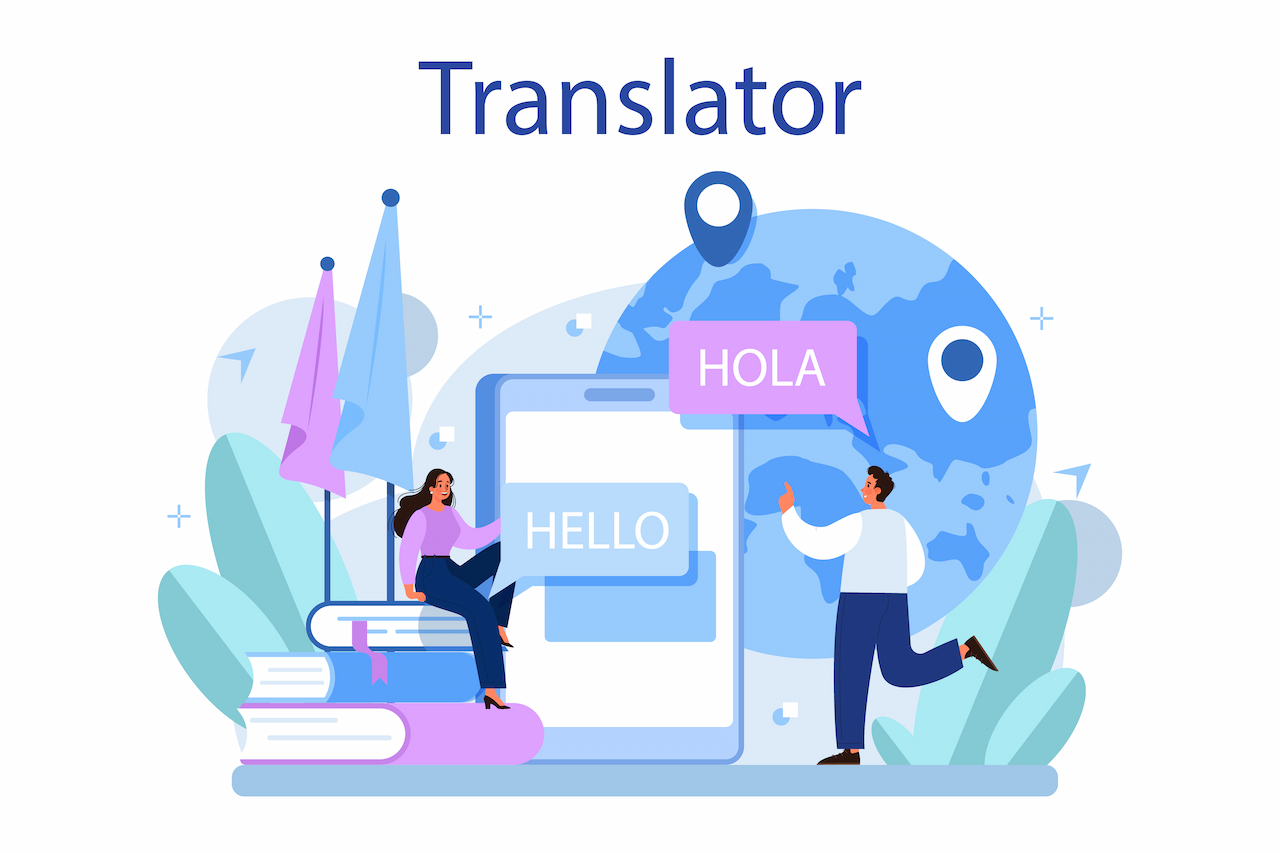
7 Video Game Localization Challenges and How to Tackle Them
These 7 video game localization challenges might hinder you from getting your players engaged with the game. Find out what they are and how to tackle them here.
Introducing a video game to localized users comes with a variety of game localization challenges. It gives plenty of downsides if not handled properly. It's worth noting that localization isn't just a mere translation. It involves adapting the game to suit the cultural, linguistic, and technical preferences of a specific target audience.
In most cases, many fail to face the challenges as such elements go unnoticed by anyone involved in the translation process until it becomes too late to rectify them. In order to mitigate the significant fluctuations between highs and lows in the localization industry, it is advisable to comprehend the challenges behind why even the most accomplished game localization experts can occasionally commit such straightforward errors.
 In this article, we'll delve into seven common video game localization challenges and provide strategies to tackle them effectively.
In this article, we'll delve into seven common video game localization challenges and provide strategies to tackle them effectively.
7 Video Game Localization Every Game Publisher Should Know
The challenges in the list below aren’t inclusive, meaning that you might have any additional challenges. Let’s take a look at the common issues every game publisher might face in the future.
Style and Language Biases
Video games come with a variety of language styles, story arcs, and stylized characters which often represent cultural references. Failing to deliver these elements in the target language would cause many changes in user experience, resulting in biases. Video game localization can be fraught with language and style biases, which, if not managed effectively, can detract from the gaming experience
A language also carries a polite form to address certain groups of people, neglecting this form throughout the process of localization would end up in a completely different environment for the users. Gamers would typically enjoy a gaming experience where they are normally in their environment and culture – that includes the way other people would address them.
Language biases can happen when gamers experience unequal treatment from different languages within the same game. It can manifest in different forms, such as the priority language used in the game and the delay in language availability.
Let's take the limited or inadequate translation as an example. Insufficient language support can alienate players who speak the less commonly supported language. This bias can result in these players feeling excluded from the gaming community.
Meanwhile, style biases refer to the preservation of cultural references during localization, especially when it comes to character interaction and the game's narrative. This game localization challenge often comes into play due to cultural differences and, sometimes, the risk of misinterpretation.
Neglecting the Cultural Perspective

Localizing a video game is about transferring the game to the target culture and language. In other words, the game should appeal to people who speak that language. Neglecting the cultural perspective in video game localization is a critical challenge.
In many cases, it happens when game developers or publishers overlook the profound impact that culture has on the gaming experience. Meanwhile, enjoying a game is about getting the players immersed in a captivating virtual world, be it the environment, characters, and setting of the game.
Failing to do so will result in the disruption of the immersion. When players encounter content that feels out of place or culturally incongruent, it can break the game's continuity and negatively impact the overall experience.
When it comes to the narrative and storytelling of the game, cultural perspective plays a crucial role in showing the appropriate folklore and legends. Ignoring the right references to the culture would lead to an inaccurate or shallow portrayal of those elements, diminishing the storytelling quality and depth of the game.
For example, a game intended for the U.S. market should be designed to attract the U.S. people. Likewise, if the target audience is in China, the same game should undergo cultural adaptation to resonate with Chinese players.
Read also: Chinese Gaming Industry's Impact on Gamers Around The World
Considering All Game Translation As One
The next game localization challenge that's worth noting is the uniqueness every language brings. Considering all game translations as one is a common misconception that one translation will work seamlessly for all target markets. In fact, every language is connected to a culture that is unique for each country or target market.
Ignoring those elements would lead to several misunderstandings, such as linguistic variances. Languages differ in structure, syntax, and vocabulary. What works in one language might not work in another. A direct translation may not capture the intended meaning, leading to confusion or misinterpretation by players.
Slang, Quotes, and Swear Words

Playful language is something unique yet challenging when it comes to video game localization. It refers to the variety of language used in informal contexts, such as slang, swearing words, quotes, sarcasm, and humor. The thing is that every language has its own kind of playful language and is highly connected with the culture.
In many cases, there is no direct translation as it might not deliver the intended meaning. If you ever notice a game character saying bizarre slang or swearing words, it's likely to be a mistranslated word. Therefore, a creative approach is significantly needed to make the words appealing to the target users.
Game localization companies could start by simply looking for the appropriate translation first. But, if there's no direct translation for the slang, try finding the relevant replacement. As long as the meaning is not changed, that will do better rather than directly translating the words.
Swearing words is another case that every game localization company should carefully address. A lack of understanding toward a culture's favored swear expression might lead to a big misunderstanding. Swearing has a little taste of art and translating these words needs a responsible consideration.
Some swear words can vary across cultures, with certain areas even prohibiting the use of explicit language. Therefore, it's crucial to be well-informed and conscientiously adhere to all local limitations.
Inaccurate Use of Intonation
Game localization challenges also include the way game publishers use appropriate intonation. It happens when the tone, pitch, or inflection used in the localized version of a game does not match the original intent or the cultural expectations of the target audience.
Neglecting the significance of intonation in delivering meaning can lead to awkward results – something that doesn't make sense for the native speakers of a certain language. It might also lead to confusion about the game's dialogue and story.
What may be seen as humorous or serious in one culture might not have the same effect in another. For example, each character in a video game has a distinct personality and background.
Their intonation, the way they speak, and their speech patterns should reflect these characteristics. Inappropriate intonation can lead to characters sounding inconsistent or unrelatable to the players.
Voice Acting and Lip-Sync
Voice acting and lip-syncing are integral components of many video games, especially in cinematic and story-driven titles. Localizing voiceovers can be challenging due to the need for accurate lip-syncing while delivering an authentic performance.
It's more than just speaking the native language but also retaining the character's personality while delivering the emotion that appeals to the target language. Therefore, the voice actors should speak the target language fluently and with the appropriate accent.
Lip-syncing is a different thing in that the actors should match the spoken dialogue with the character's lip movements. This is crucial for an immersive experience. It can be complex as languages may have different speech patterns and syllable structures.
Text Expansion
Last but not least is the text expansion which creates another tricky game localization challenge. When translating a language, it’s common to have the translated version to be shorter or longer.
Text expansion is a common challenge in video game localization that occurs when the translated or localized text in a video game takes up more space than the original text in the source language.
It might seem just a mere issue, but it is more problematic than it looks. A longer or shorter version would disrupt user interfaces and layouts or occupy many spaces on the screen. As such, it might be necessary to redesign the game’s elements to accommodate longer texts.
Moreover, text expansion can impact the pacing and flow of the story in narrative-driven games. Lengthy text can lead to slower delivery of dialogue or information, potentially affecting the player's immersion and comprehension of the game's plot.
Read also:Translating Game Text: Maintaining Immersion and Player Experience
Best Practice for Video Game Localization
Despite the game localization challenges that may arise, implementing best practices is crucial. These practices help navigate the complexities of the process and ensure your video game localization efforts lead to a seamless, culturally sensitive, and enjoyable gaming experience for players worldwide.
Transcreation
Transcreation is a practice that goes beyond literal translation. Many game localization challenges are related to the inappropriate translation from the source to the targeted version. Therefore, it is crucial to resonate with the cultural and emotional nuances of the target audience.
Transcreators aim to capture the essence and intent of the source content rather than just translating words. This practice helps overcome challenges related to cultural sensitivity, such as humor, emotion, and intonation. It will ensure that the game feels as engaging and relatable in the target language as it does in the source language.
Tools for Efficiency

Game localization involves various specialized tools and software that can significantly ease the process. Translation memory tools, terminology databases, and localization management systems streamline translation and consistency across the game. Computer-assisted Translation (CAT) is a perfect tool every translator should be familiar with. It helps simplify the process at different stages of localization. Using tools is also helpful for better collaboration between translators, developers, and localizers.
Continuous Localization
Localization in games requires rigorous work and complex collaboration between the developers, project managers, and translators or localizers. Instead of working sequentially, it’s better to implement continuous localization.
It is an iterative approach to the localization process. Instead of waiting until the entire game is completed before starting localization, it involves integrating localization into the development pipeline from the outset.
Developers work on smaller, manageable pieces of content, and localization occurs concurrently. Continuous localization helps game localization companies use their resources more effectively and improve flexibility.
This practice helps overcome game localization challenges like text expansion, as content can be adapted in real time to fit different languages. It also allows for quicker adaptation to changes and reduces the risk of overlooking issues until it's too late.
Brevity
It’s important to keep everything in a simple form when it comes to the design, especially if it comes to mobile games. Brevity emphasizes concise and effective communication. It involves rephrasing and condensing text while preserving the original meaning.
This practice is particularly crucial when dealing with languages that naturally have longer text, such as German. The shorter text helps manage text expansion challenges, ensuring that the game's user interface and dialogues remain visually appealing and easily comprehensible.
Excessive content might be too overwhelming for players to digest the information. They might just skip the information or dialogues and give up on playing the game. Keeping the content simple is important to help players stay engaged.
Be A Gamer
Being part of the game is a top-notch best practice to tackle game localization challenges. If you want to understand them deeply then be part of them. This practice will help the team to better adapt the game's content to suit the preferences of gamers.
Being a gamer provides insights into the gaming community, preferences, humor, and gaming terminology. It helps address challenges related to maintaining the tone and atmosphere of the game while ensuring it resonates with players in the target market.
Final Thought
Video game localization is a complex and multifaceted process that involves much more than just translation. The list of game localization challenges above is just the common ones found by the majority.
There is more to explore in order to achieve a successful game localization, from cultural sensitivity to linguistic diversity, voice acting, and legal compliance. With the rightlocalization strategies, these challenges can be overcome, ensuring that gamers worldwide can enjoy an immersive and culturally relevant gaming experience.
Looking for a practical way to resonate your video game with a wider audience? Digital Trans Asia can help broaden your business horizons by using our professional translation services and adjusting your game localized to the local market. Contact us via email at business.development@digital-trans.asia. Let's collaborate to unveil fresh prospects for your business on a worldwide level!
Read also: Effects of Game Localization on The Global Gaming Community